Defining your style is very important when it’s time to design any space because it serves as a guide at the time of choosing colors. The type of furniture and other details. It’s also great for inspiration and how to achieve a cohesive pop. Interior design styles constantly evolve, making it difficult to keep up with what is in fashion and what is out. In this article, we will go through four trending decors that most people are following right now. So, if you are one of those who love Bohemian, modern, traditional & minimal decor, keep reading this essay.
Bohemian Decor
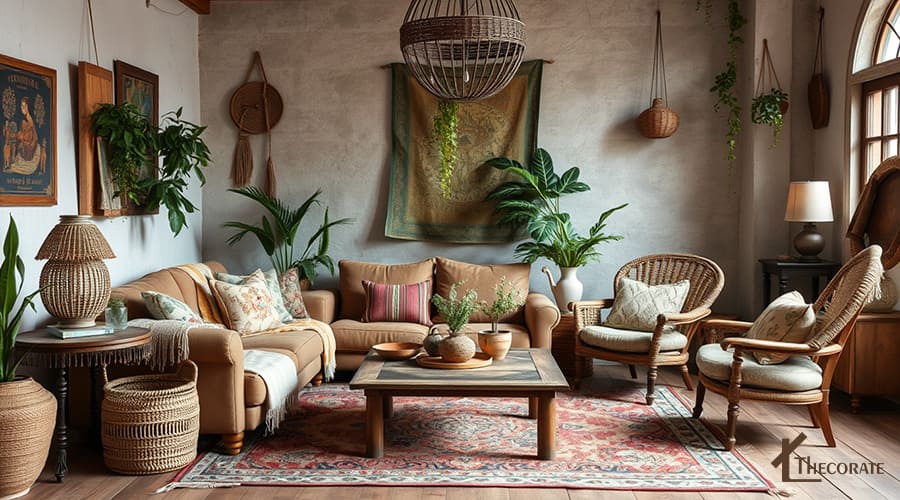
Bohemian style is all about celebrating culture and traveling, where you later collect objects to move to your space. It is a style that is very open to interpretation and is where almost anything goes. Historically, the Boho style is very hippie. However, the current tech is much more modern. In the past three years, Boho has all been about a white, hairy look paired with natural and organic design elements but has recently taken the moody approach with dark feature walls. There really is no defining color palette.
This design perspective emerged in the early 19th century when artists, writers, and performers moved into the lower-cost gypsy parts of Paris because they believed that creativity was more valuable than money. A lot of the design attributes of the Bohemian style today incorporate many different things from different philosophies, parts of the world, and ways of life.
Bohemian styles are defined by a lack of structure, and they opt for carefree layers of patterns, textures, and colors. While there are some common practices to the Bohemian look, there are no hard rules like there are in minimal and industrial styles. Color palettes lean heavily on earth tones like browns and greens and can range from pastels to jewel tones. Metals such as gold, silver, brass, and iron are common for fixture finishes; the more distressed, the better. Textures of rugs, throws, and pillows are also slightly worn and distressed, and furniture pieces are usually vintage or secondhand. Furniture pieces can range from all types, from chess lounges to floor cushions to a standard sofa. Original or handmade pieces of art, flea market finds, and travel souvenirs are also perfect for this design style.
Some of the ways that you can fit this style into your home can go from layering different distressed rugs or adding bright and textured pillows and throws with different motifs on them. Going out to a flea market or garage sale and getting some furniture from them is like perfect for this design style. This style is really about you and what’s personal to you! There is really no way you can mess this design style up.
Minimal Decor

Minimalist style is defined by the famous concept “less is more.” Minimalism in design is to strip everything down to its essential quality and achieve simplicity. The basic geometric forms, elements without decorations, simple materials, clean lines, uncluttered monochromatic natural light, and order are all essentials in a minimalist style. All of the furniture has a purpose and function. Pieces are produced, but they still stand out, which means that its furniture is a piece of pure art. The color palette here is very serene, practical, and super basic. The neutral colors like white, gray, and black are the only favorites. Textures like natural concrete and wood are essential in this style, and natural plants are as well.
Minimalism can be described as more than an interior style but rather a way of life. It is all about deliberate styling, where everything in the home has a purpose. Minimalist interiors are highly inspired by modern and Scandinavian styles, where the core design features are taken and simplified even further. The color palette is hyper-restrained and often only features black and white. It is about creating a bright and clean space that is soothing and inviting, but many can find this polarizing.
If you are a super practical person, you see beauty in simplicity, and you love living in a practical way, this style absolutely defines you! Maybe you might think this style is boring or too simple, but when you are able to see beauty in the simple things, you definitely live better!
Traditional Decor
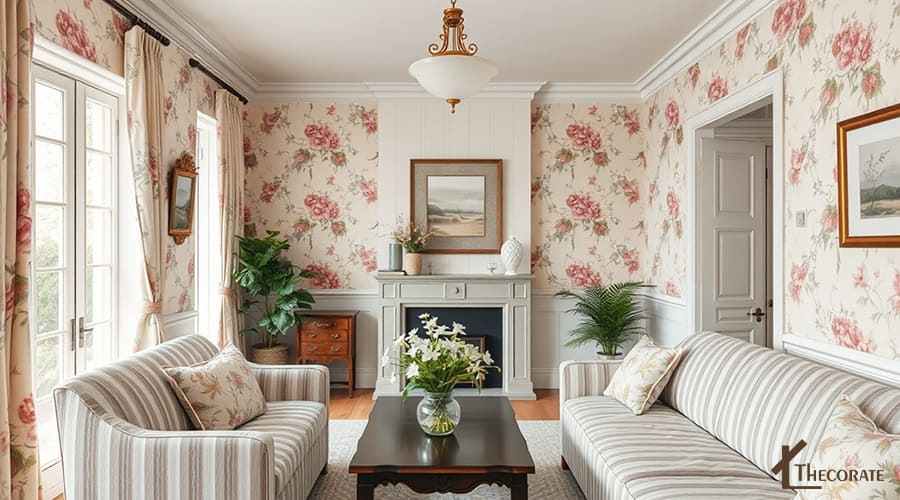
The traditional decoration is calm, orderly, and predictable. It’s comforting and classic. There is nothing chaotic in traditional decor. The furnishings are classic, and nothing is a surprise. The pieces match and are consistent. Traditional styles stick to the basics. Wood furniture will usually have a mix of pure lines. Florals, plain colors, stripes, and small Oliver patterns are common. Soft, neutral colors are all part of the traditional style color scheme.
Traditional interior design does not follow current trends and is deeply rooted in 18th and 19th-century European interiors. It’s all about formality, symmetry, and harmony in a way that conveys an understanding of elegance. Pure traditional style is not a very popular design style today. But you may see it in homesteads or heritage homes that feature detailed millwork such as wainscoting and crown moldings. In terms of furniture and the core, antiques, dark ornate wood furniture made from walnut or chestnut Diamond tufted lounges, wingback chairs, mirrors, Baroque-inspired frames, oil paintings, and vases with fresh flowers. The color palette most commonly features rich burgundies, browns, and greens.
Modern Decor
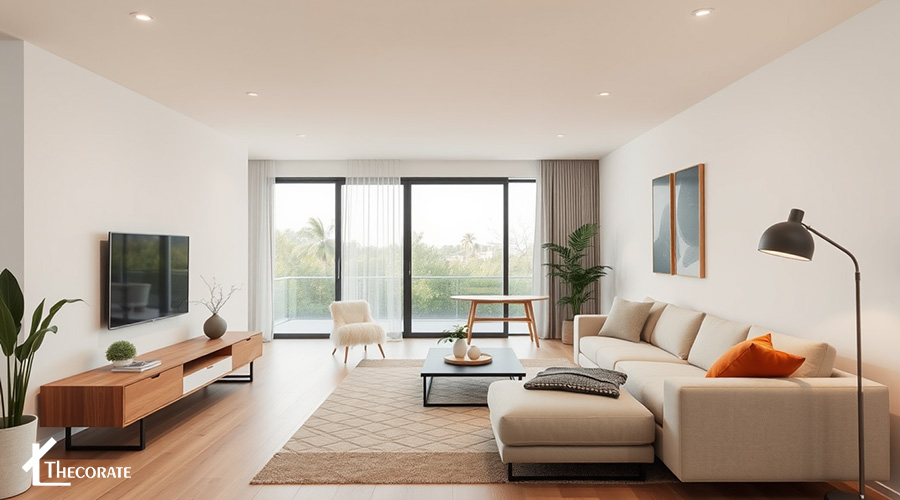
Some people confuse modern and contemporary design. These two are completely different. Modern design dates from the early to mid-century. However, it has different categories that we break down below. Clean lines, neutral colors, natural materials, low and long furniture, the open-concept floor plan, and neutral light are all elements that define modern design.
Mid-century Modern style is a star that originally spanned from the mid-1940s to the 1970s. It remains popular today and is very easy to incorporate with various design styles. The style is all about clean lines, geometric and wavy shapes, minimal hardware, simple silhouettes, and paired-down color palettes with bright pops of color. You can probably identify the style from a mile away as so many iconic pieces rose from this era. Think the Eames town share an auto man by Charles and Ray Eames. The Arco floor lamp and the Noguchi Coffee Table.
Read More: living room layout ideas
Organic Modern
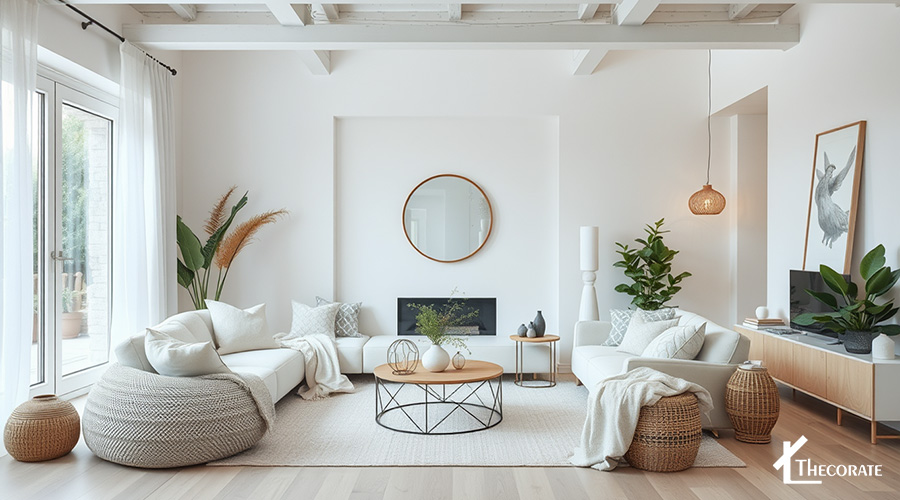
Organic modern is a relatively new design style that is all about a neutral color palette and creating interesting things by layering textiles and textures through outer space. The style often adheres to a light and airy color palette, which most commonly features white cream, beige, and pale gray. But you can also take a more colorful approach by making a statement with bold natural colors such as greens and utilizing off-white and creams to create a balance. As the name organic suggests, the furniture and the core can sometimes get a bit wild and sculptural depending on how far you want to take it, but they often remain calm and serene instead of busy.
Modern Farmhouse
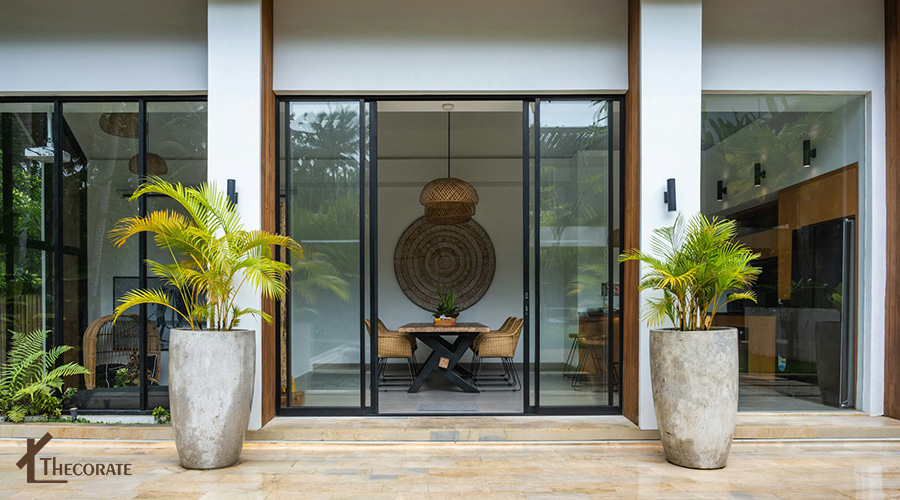
The modern farmhouse style is most suited to homes already in the farmhouse architectural shop. Think exposed wood beams and black frame windows. This style is all about giving a knot to a simpler life by creating a homey ambiance. It takes country design’s comforting and cozy elements but with a slick twist by incorporating clean lines. The most distinctive material and texture of this style is rustic styles. This can be incorporated not only through architectural details like wooden beams but also through chalk-painted, distressed furniture pieces and chairs and tables that have access to them. The rustic elements are then contrasted with modern elements such as stools with hairpin legs, couches, and coffee tables that erectile India in shapes.


